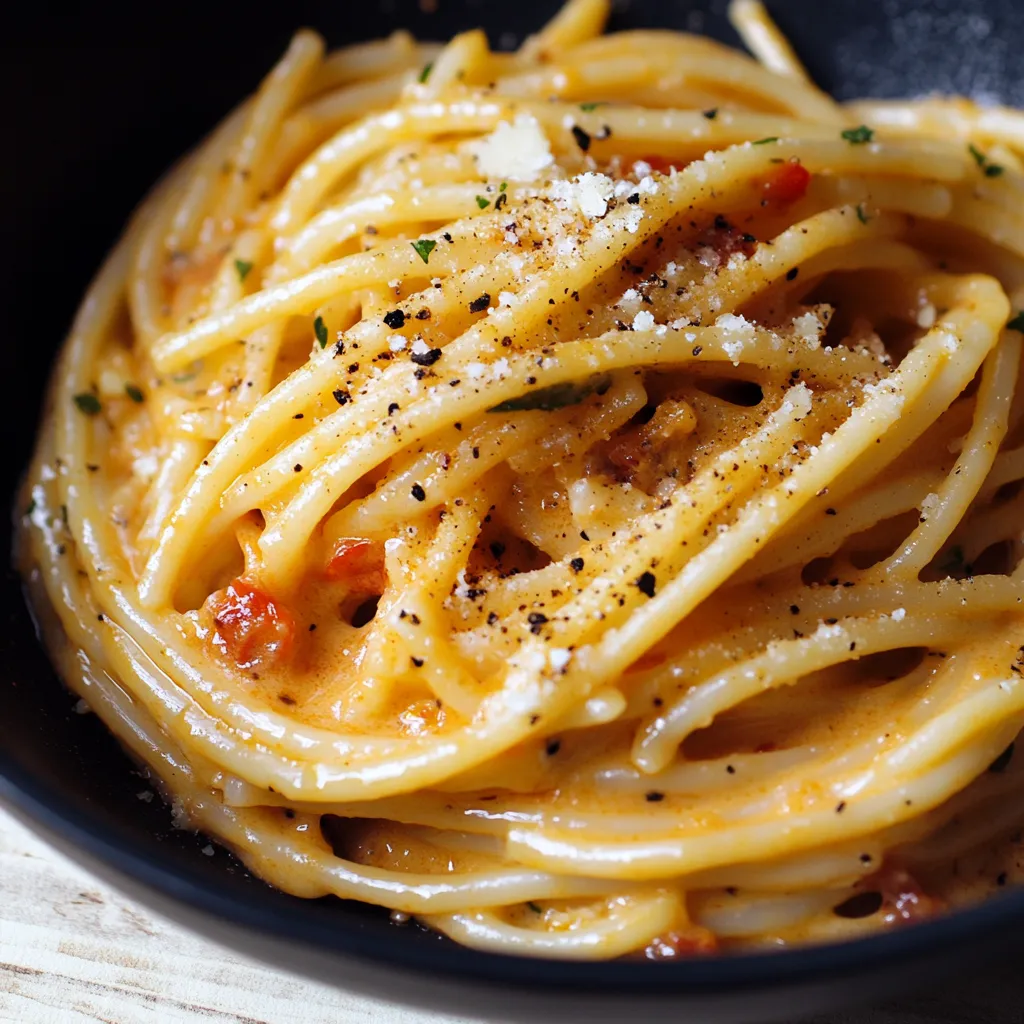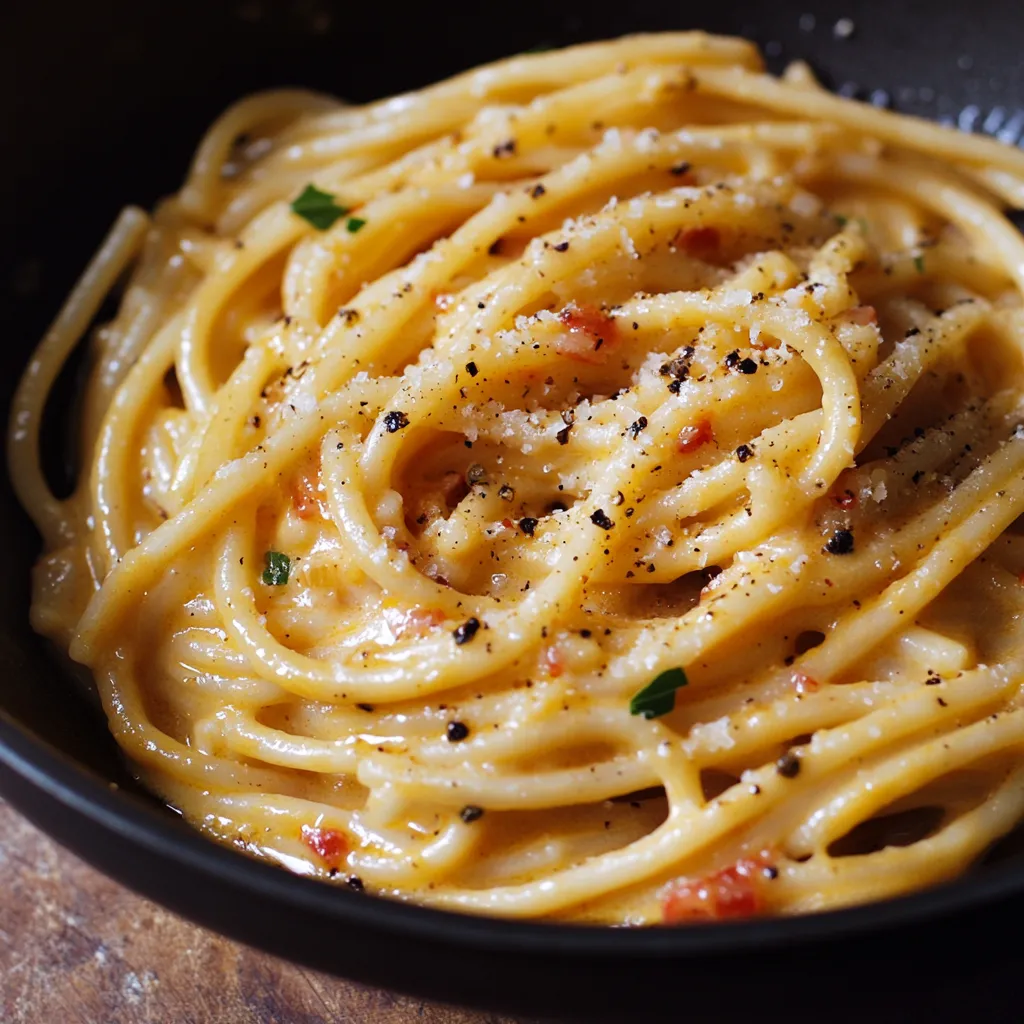 Pin it
Pin it
Punchy Garlic Chilli Cacio e Pepe takes the Roman favorite to new heights with bold extras that support, not smother, the classic taste. This zingy version hangs on to that familiar creamy feeling, but brightens it up with spicy fresh chilli and golden, fragrant garlic. Each pasta strand grabs the sauce, hitting the sweet spot between salty, spicy, and rich. Every forkful kicks off with a peppery buzz and ends with a warm heat that just makes you want more.
This twist came together for me during a frosty winter when regular cacio e pepe was missing that cozy factor. I kept trying new things, but the real winners were fresh garlic and chilli. My family would ask for it every week, even my dad, who normally stays away from anything spicy. He said the heat builds slowly and never drowns the cheesy sauce. These days, we pull this out for special dinners friends keep requesting.
Must-Have Italian Essentials
- Whole black peppercorns: Packed with flavor when freshly toasted and ground up.
- Fresh flat-leaf parsley: Perks up everything at the end and keeps it from feeling too heavy.
- Shallots: Add a touch of natural sweetness to mellow out the strong stuff.
- Kashmiri chilli powder: Brings bright color and gentle heat, not an overpowering punch.
- Dried spaghetti: Holds onto the creamy sauce better than most noodles.
- Pecorino Romano cheese: Sharp, salty, and the soul of the dish.
- Fresh garlic cloves: Build that mouthwatering savory base when gently sautéed.
- Butter: Adds richness and helps the sauce come together smooth.
- Red bird's eye chillies: Give you just the right fiery edge and a hint of fruitiness.
Totally Tasty Pasta
- Final Integration:
- Toss everything together so the sauce hugs every noodle, adding extra pasta water if things get too thick.
- Mantecatura Mastery:
- Take the pan off the heat first, add in reserved pasta water and cheese, and toss like crazy to make things silky.
- Pasta Precision:
- Boil the pasta until just before al dente in super salty water. Don’t forget to save a cup of that starchy water before draining.
- Chilli Integration:
- Mix in sliced chillies with the garlic so the butter picks up their punch.
- Garlic Technique:
- Slide in thin garlic slices and let them get barely golden, but don't let them brown or they'll turn bitter.
- Aromatic Development:
- Sweat out your minced shallots till they're soft and sweet-smelling.
- Flavor Foundation:
- Pop your butter in the pan first, then get the ground black pepper sizzling in it for a burst of aroma.
- Pepper Preparation:
- Start by toasting the whole peppercorns in a dry pan so they're super fragrant. Bust them up in a mortar and pestle, leaving some nice chunky bits for crunch.
 Pin it
Pin it
My grandma swore that if you’re patient, your pasta is next-level. She taught me that rushing ruins the texture and taste. Every time I serve this, folks say it’s the best on the table. You honestly don’t need fancy stuff—just a little extra love.
Classic Roman Roots
Cacio e pepe has been part of Rome’s food scene for generations. It started out with shepherds who needed simple, non-fussy stuff. Bringing garlic and chilli into the mix keeps the old-school feel but kicks the taste up a notch, making it something friends don’t forget.
Tasty Pairing Suggestions
Serve alongside peppery arugula tossed with lemon and olive oil for balance. Sop up every drop with chunky sourdough. Add a fizzy, cold Frascati for the full vibe. If you want to finish strong, grab a chilled limoncello.
Fun Twists
Feeling zesty? Sprinkle on lemon zest just before you eat. Want herby notes? Mix in fresh basil with your parsley. For extra richness, toss in some crispy pancetta.
Easy Storage
This dish shines straight out of the pan, but you can cool leftovers and stash them in the fridge for two days. To warm it back up, drop it in a pan with a splash of water and stir until it gets saucy again.
 Pin it
Pin it
One of the best times I made this was for a Roman pal who was visiting. He didn’t believe the twist would work, but he changed his mind fast after tasting it. He cleaned his plate and called it ‘smartly original.’ This pasta nails that tricky mix between old and new.
Frequently Asked Questions
- → Can I adjust the spice level of this Garlic Chilli Cacio e Pepe?
- For sure! If you want to tone down the heat, just use less bird's eye chilli or switch it out for something like jalapeño. Skip or drop down on Kashmiri chilli powder too. Leave the black pepper in—it's the classic cacio e pepe must-have.
- → What can I substitute for pecorino cheese?
- Swap in some parmesan for pecorino—that’s your closest bet, though it'll taste a bit nuttier and smoother. Aged Asiago or even Manchego will do if that's what's around. Pick any hard cheese you can grate yourself—steer clear of the stuff that's pre-grated since it won't melt right.
- → Why is my sauce clumping instead of becoming creamy?
- If you’re seeing lumps, your pan’s probably too hot when you toss in the cheese. Cut the heat first before adding cheese and some pasta water. Stir as you add cheese and keep things moving. If it still goes clumpy, pour in a splash more pasta water and stir like crazy—off the heat—to bring it together.
- → What's the best pasta shape for this dish?
- Go for long pasta like spaghetti or bucatini, just like the classic. These types grab the sauce the best and are easy to twirl. Linguine or fettuccine are fine backups. Skip the short stuff like penne—the sauce won’t catch as well.
- → Can I make Garlic Chilli Cacio e Pepe ahead of time?
- You really want to eat this right after making it—the sauce holds together when everything’s hot and fresh. If you need to get ahead, toast your peppercorns and prep what you can, but wait till the last minute for the actual cooking and sauce bit.
